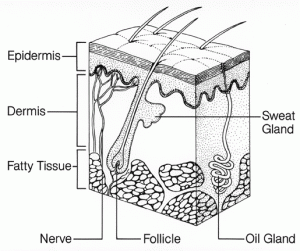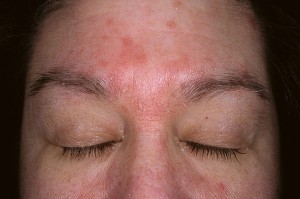Flaky skin on the face or scalp – a common misconception is that the skin is dry. However, the flakiness may be evidence of seborrheic dermatitis. Using certain types of moisturizers can aggravate the condition. What can we do to prevent this condition and keep our skin healthy?
Seborrheic dermatitis
is a chronic inflammatory skin disorder that develops in parts of the body rich in the sebaceous glands that produce sebum (oil). The most frequently affected areas are the scalp, behind and inside the ears, the eyebrows and eyelids, the nose and the chest. The disorder presents as flakiness, yellowish lesions and reddish patches. The skin looks greasy and swollen and is sometimes itchy. Seborrheic dermatitis is associated with greasy hair but it has no bearing on the personal hygiene of the affected person.
This common syndrome affects 5% of the population. Fatigue and stress can both trigger episodes of seborrheic  dermatitis, which develops more frequently in winter and is not affected by diet. It can be confused with eczema, psoriasis or skin allergies, which is why a dermatologist should be consulted.
dermatitis, which develops more frequently in winter and is not affected by diet. It can be confused with eczema, psoriasis or skin allergies, which is why a dermatologist should be consulted.
Is there any definitive treatment?
There is no definitive treatment: the causes of the disorder are not known and so there is no single remedy. Most treatments do not cure the symptoms, just keep them under control, prevent possible infection and reduce inflammation and itchiness. Treatments also depend on the patient’s age and which areas are affected.
Since seborrheic dermatitis is a chronic disease, it presents in periodic episodes. Long-term therapies are recommended because the dermatitis may recur after treatment.
What can be done?
For symptoms such as those described, an expert should be consulted as soon as possible for advice on treatment and care.
As a general rule of thumb, daily use of standard moisturizers can help reduce redness and flakiness. It is recommended to use mild soaps (with a pH between 4.7 and 5.5) and also to avoid overly greasy creams and lotions.